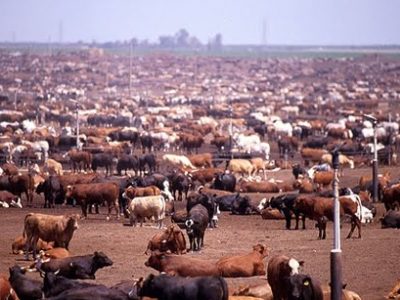Lethbridge County livestock head tax ‘not the fairest’ to feedlots, says report

A new report written by Alberta economists says the so-called head tax imposed by Lethbridge County on livestock in their jurisdiction is “not the fairest,” and could have a detrimental impact on feedlot owners.
The research paper was published by the University of Calgary’s School of Public Policy and was created at the prompting of feedlot owners in southern Alberta.
While the $2.50 per head tax is applied more widely to cattle, sheep, horses, pigs and chickens, feedlot owners have been baring the brunt of the tax burden, which is estimated to bring in roughly $2.5 million annually.
Since its implementation in 2016, feedlot owners and operators have taken the issue to court and are appealing the ruling that found the tax to be legal.
The county’s council brought in the tax for infrastructure maintenance, which includes nearly 2,000 kilometres of roads and 167 bridges. Prior to the head tax, the county was bringing in less than $3 million annually.
Report recommendations
The report found not only does the tax place a disproportionate amount of the burden on feedlot owners and operators, it also is inequitable amongst the feedlot businesses — the premise being those who use the roads the most, should pay the most.
For example, some feedlots are operated in tandem with farms that grow the feed, explains Melville McMillan, one of the authors of the report. This means that feedlot wouldn’t use the roads to truck in grains and feed the same way others do.
“The feedlot capacity does not necessarily relate closely to road utilization,” McMillan told CBC News.
An additional concern McMillan raised was that the tax is imposed on a feedlot’s provincially regulated capacity, not the number of cattle actually in the lot.
Roughly one-quarter of the province’s feedlot cattle comes from Lethbridge County, McMillan said.
The report suggests three possible alternatives to the current business tax:
- User fees imposed on the trucking industry using GPS technology to track road usage.
- Usage levies calculated based on a feedlot’s capacity and its distance from provincial roads.
- Incorporating an equation into the current tax, which would take into account how many head of livestock exceed the company’s feed capacity using their own crops.
County responds to report
Lorne Hickey, the reeve in Lethbridge County, said he and his council reviewed the report on Thursday.
“We feel it does have some statistics that have merit. but there are other areas that are deficient,” he said.
“I think one of the most outstanding things to us was that other than the statistical information which they received from the county, the paper really failed to take into account Lethbridge County’s input on the issue.” Hickey said.

Lorne Hickey is the reeve for Lethbridge County and was reelected in 2017 after the tax’s implementation. (Sarah Lawrynuik/CBC)
Hickey also said some of the suggested alternative taxation methods didn’t follow the rules of the Municipal Government Act.
Alternatives such as GPS tracking of the trucks utilizing the roads within the county would add costs the county isn’t prepared to foot the bill for.
“It’s pretty simple, we put the tax in because we felt the tax was for the people who used the infrastructure the most. If you have a little acreage down the road … when you’re paying more in taxes than an intensive operation, there’s nothing fair about that either,” Hickey said.
Predicted impact on industry
Cattle and other livestock are subject to the tax, but below certain thresholds, no tax is paid.
The report predicts “ripple effects” from feed producers, to cattle producers, to meat packers and consumers.
Rick Paskal, president of Van Raay Paskal Farms Ltd. — one of the companies involved in challenging the tax in court — told CBC News in May he believed the tax was “the beginning of the end of intensive livestock in the county of Lethbridge.”
McMillan said he can’t see businesses in the area folding because of this new financial strain, but it would shrink operating profit margins by up to 20 per cent per head, in an industry where margins are already thin.
“I would doubt very much if it’s going to mean that businesses would go under, but the probable effect is that it may have more of a long-term impact on the industry in the county. This is an added cost that will make setting up feedlots or operating feedlots in the county less attractive than it was,” said McMillan.
By Sarah Lawrynuik, CBC News
Source: CBC


